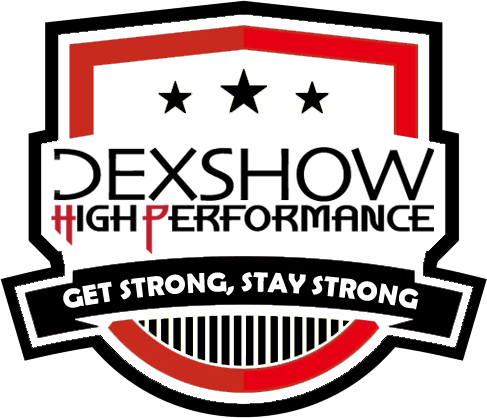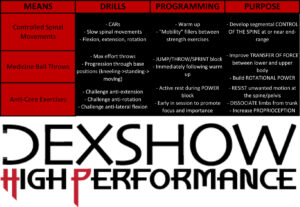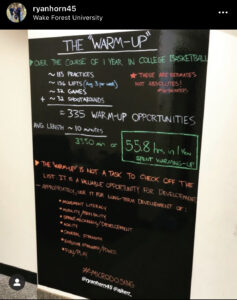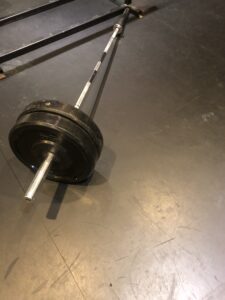As promised, here is Part II of my Hand-Eye Series. I hope to shed some more light on what I use when developing hand-eye coordination in athletes, who benefits the most, and when and how I plug in drills to my strength training programs. If you haven’t read Part I yet, please go HERE and read it. This article is based on my hand-eye development philosophy that was shared in my previous post. If you took anything away from Part I, it had to be these two sentences:
“Good hand-eye coordination training PROGRESSIVELY challenges the athlete’s ability to execute a task based of the information garnered visually. Progressively is the key word here.”
My Hand-Eye Continuum:
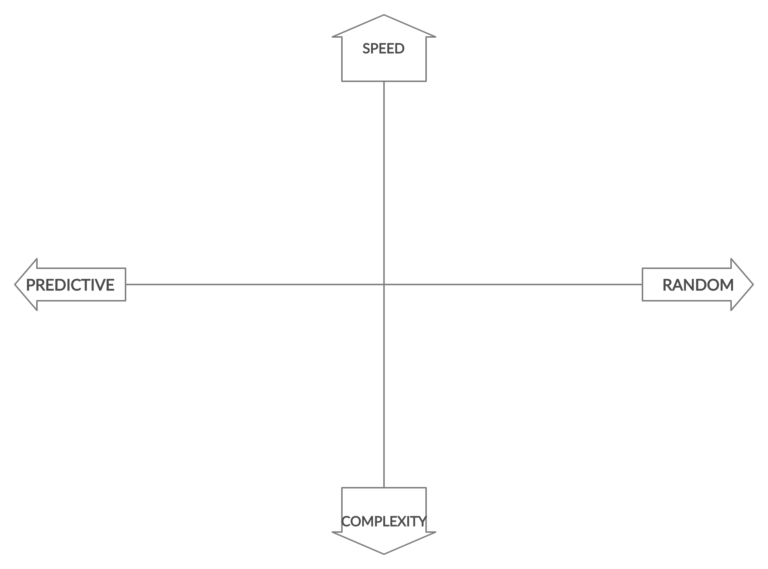
And the following quote:
“The beauty of having a system to place drills along a continuum is that you can constantly evolve and challenge the athlete’s overall hand-eye coordination while also recognizing what specific quality you are actually training. Training implies systematic improvements, improvements require an adequate stimulus, an adequate stimulus is achieved when a system is stressed enough to adapt positively. To truly make change, PARENTS AND COACHES NEED TO SELECT HAND-EYE DRILLS THAT CHALLENGE THE ATHLETE’S ABILITY TO EXECUTE THE TASK BY MANIPULATING A COMBINATION OF RANDOMNESS, SPEED, OR COMPLEXITY. PERIOD.”
With that refresher out of the way, we can dive in on what training implements are useful in developing hand-eye coordination in your athletes. Remember, there are REACTIVE hand-eye drills and COGNITIVE hand-eye drills. Reactive drills sit on my continuum and challenge the speed at which an athlete can complete a task. Cognitive drills force the athlete to make a choice based on external stimuli that will allow them to react and execute a task. I’ve thought about cognitive drills more since I wrote Part I and have decided that they can sit on my Hand-Eye Continuum as well. COGNITIVE drills still rely on an IF THIS, THEN THAT scenario but the randomness, speed, or complexity can be challenged by the amount of IFs that require a decision, the speed at which the decision is to be made, or the type/amount of reactions needed to execute the task, respectively.
WHAT EQUIPMENT CAN BE USED TO TRAIN REACTIVE HAND-EYE COORDINATION?
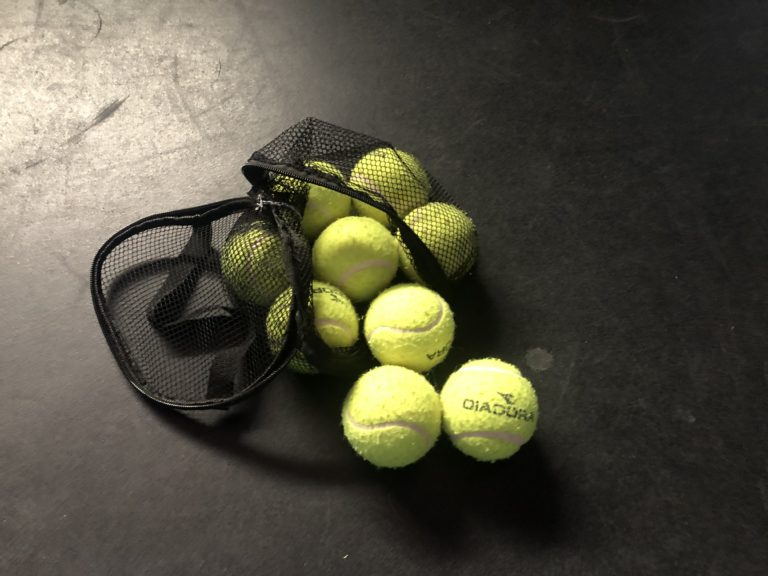
Tennis balls are a classic tool when it comes to hand-eye development. I like using tennis balls to create REACTIVE drills where I can manipulate the randomness, speed, or complexity of the drill. Here is a very predictive drill that is not very complex (task is simply to throw and catch the same ball) and the speed is chosen by the athlete:
To progress the RANDOMNESS of the drill, a 2nd party can throw the ball to the athlete forcing them to react to where the ball is thrown. To increase the complexity of the drill, I can throw the ball to the athlete by bouncing it off of a box, and then off of a wall (increasing speed of the reaction needed due to the limited sight of the ball until it hits the wall:
Now, the athlete must react to where the ball is thrown, make an instantaneous calculation of where it will bounce to and then adjust to complete the task (catch the ball). Anytime another tennis ball is introduced to the drill, the COMPLEXITY has been progressed. Here are some examples of dual tennis ball drills:
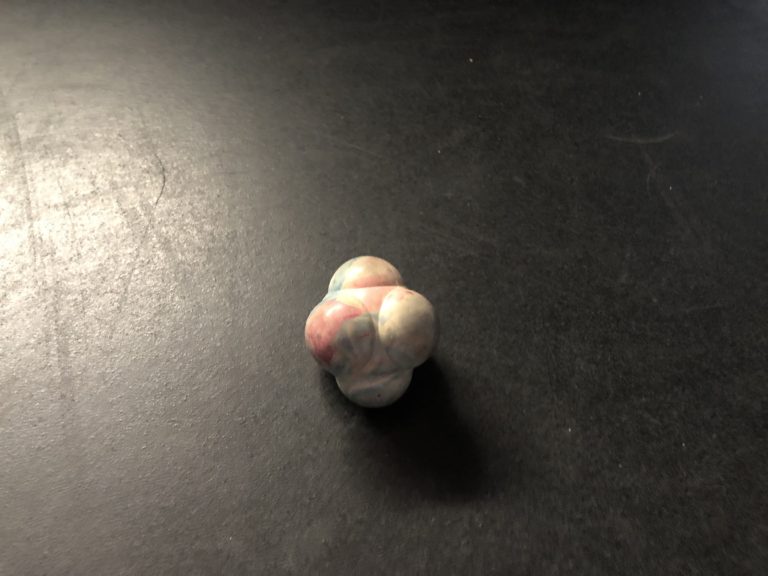
You can use a reaction ball to challenge the randomness of reactive hand-eye drills. The ball’s asymmetrical shape bounces unpredictably and forces the athlete to purely react to the direction of the bounce, compared to the predictive bounce of a spherical tennis ball.
A QUICK NOTE ON "JUGGLING" AND "COMBO" DRILLS
When thinking critically of juggling variations, we discover that they are manipulations of COMPLEXITY of the drill and as such, the randomness has to be turned down. Juggling variations are usually cyclical and therefore very predictive and fall on the left of the Hand-Eye Continuum; BUT, the patterns or number of balls (complexity) or speed of the juggling can be adjusted to challenge the athlete. I think juggling is misunderstood as a means for improving hand-eye coordination. Let’s say you cannot juggle three tennis balls. To practice, you start to practice throwing two balls up and catching them with the same hand – a crucial piece to juggling, but not the entire task of a 3-ball juggle. You are challenging your hand-eye coordination by lowering the complexity from 3 balls to 2. Once this becomes automatic and easy, you’ve gained some hand-eye coordination because you can complete the task without any trouble – doing the same drill now will not challenge your current ability and NEEDS TO BE PROGRESSED. Eventually, if you’ve broken down 3-ball juggling into its prerequisites and have improved your hand-eye to be able to complete those less complex tasks, practicing the 3-ball juggle would be the next progression. WOW! Now you can juggle! Great, but don’t continue to juggle 3 balls easily and claim it is a hand-eye drill. **Learning to juggle DOES mean you’ve improved your hand-eye coordination. It DOES NOT guarantee that it will transfer to your sport. I think that constantly improving hand-eye coordination can be an important piece to being an elite athlete, but it has to be improved methodically and with purpose**
IF YOU ARE NOT CHALLENGING ONE OF THE HAND-EYE CONTINUUM’S VARIABLES AT OR NEAR THE EDGE OF THE ATHLETE’S CURRENT CAPACITY, IT IS NOT TRAINING. It won’t create any change and it is probably a waste of valuable training time. This is the reason why I strongly dislike “combo” drills. This is the majority of what you see online. What I’m talking about here are certain exercises or drills that are performed during another exercise or drill. Athletes doing sit-ups while throwing tennis balls to themselves, famous football players standing on a stability ball doing squats while catching a called colour on a Hecostix, and ALL the other combo “hand-eye drills” are for likes only. No ability is being challenged enough to create any positive adaptation. GREAT ATHLETES ARE ABLE TO PERFORM DRILLS LIKE THAT BECAUSE THEY ARE GREAT ATHLETES AND THEY DIDN’T BECOME GREAT ATHLETES BY DOING THOSE DRILLS. If you want a stronger core, train for it with great intent. If you want more powerful legs, train for them with great intent. If you want better hand-eye coordination, train for it with great intent. If you try to do both in the same drill at the same time, you’ll get neither.
WHAT EQUIPMENT CAN BE USED TO DEVELOP COGNITIVE HAND-EYE COORDINATION?
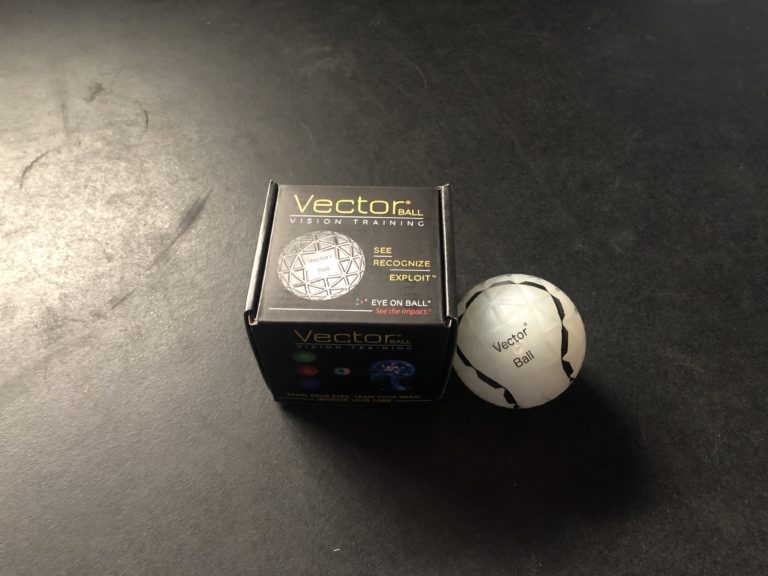
The Vector Ball is about the size of a tennis ball but has a translucent cover with three coloured lights inside. As the ball makes contact with something, one of the three lights randomly flashes its colour. As a first progression for COGNITIVE hand-eye drills, I like to have the athlete complete the task and then react verbally to what information they received by calling the colour of the light that flashes when they catch it. The next progression is to bounce the Vector Ball to the athlete and have them call the colour before they catch it like this:
Once they’ve mastered that, we can move on to adding constraints to the task that depend on the functionality of the Vector Ball. In this case:
- if the light flashes red, the athlete must catch the ball with his right hand
- if the light flashes green, the athlete must catch the ball with his left hand
- if the light flashes blue, the ball must be caught with both hands
The possibilities are endless when it comes to the Vector Ball and how you choose to set up your drills but make sure you are challenging how quickly the athlete has to make a choice and execute a task related to the stimuli they receive from the ball(s). On my continuum, the randomness of the Vector Ball stays the same as there are always 3 possible colours to flash, but the speed at which the decision needed to execute the task is made and/or the complexity of the reaction can be manipulated by the coach.
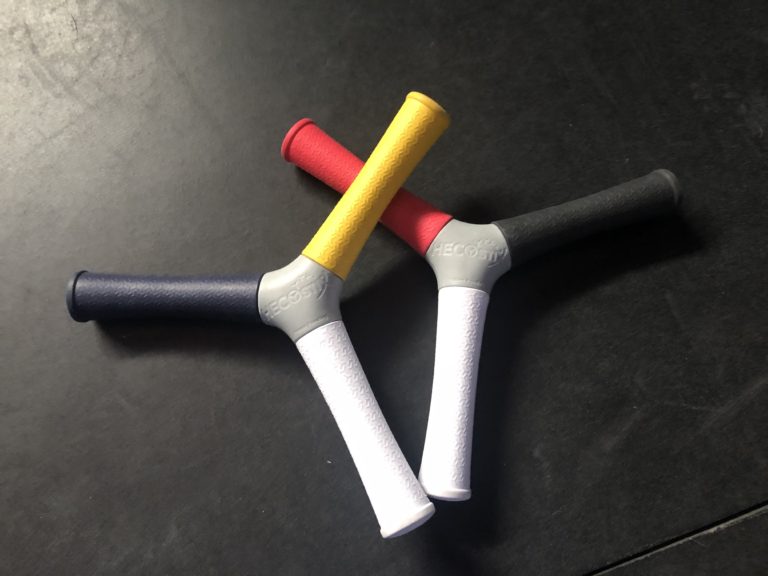
Hecostix are tri-pronged foam implements with various colours of prongs. Inherently, catching a spinning Heco is much more challenging than a ball so the complexity of the task in any drill is higher to begin with. Once the athlete has mastered catching it, they can start to call the colour that they grab. Next, I call the colour I want the Heco to be caught on, then toss it to the athlete. You can easily progress this type of drill by calling the colour later and later into the throw – that is manipulating the SPEED at which the reactive decision needs to be made. Spinning the Hecostix makes the task of catching on any specific colour exponentially more challenging as well:
Later on in the progressions, I’ll introduce a second Hecostix:
Hecostix differ from Vector Balls significantly in that the stimulus that is given for the athlete to make a decision based on is AUDITORY whereas the Vector Ball provides a VISUAL stimulus. I think we can get benefits of training both – and much later down the line, mixing both implements or stimuli into a single drill (very advanced).
This overview is a small subset of basic drill progressions for your athletes, intended to visually help the reader grasp the manipulations of the variables/qualities (RANDOMNESS, SPEED, COMPLEXITY) on my Hand-Eye Continuum. The most important thing when designing and implementing REACTIVE or COGNITIVE hand-eye drills is that you understand the progression/regression model and adequately challenge the athlete to drive improvement of the intended quality. Remember, no matter how “basic” the drill may appear, if it is challenging one or more variable enough, adaptation will occur and that means it is a good drill for that athlete at that time.
WHO CAN BENEFIT FROM HAND-EYE COORDINATION TRAINING?
To be frank, I think most people (athletes, general population adults, and youth) can benefit from some degree of hand-eye training. As I mentioned in Part I though, there are more important aspects of performance training that the majority of valuable training time should address. If I have an adult who has chronic knee pain, I won’t bother doing hand-eye drills – I want to help them address their dysfunction. If I have an athlete who has constantly been injured, I won’t bother doing hand-eye drills – I want to help change imbalances and movement faults. If I have a youth who is suffering from overuse injuries (happens with early-specializers and/or no off-seasons), I’ll limit hand-eye drills – I need to give that kid some strength but can use “hand-eye drills” to make sessions more fun. NO YOUTH ATHLETES ARE GETTING OVERUSE INJURIES FROM NOT HAVING GOOD ENOUGH HAND-EYE COORDINATION. They are physically unprepared for the demands of their sport and need a good strength training program/coach, not flashy Instagram drills. DO NOT overestimate the ability of hand-eye training to make a profound difference in athleticism if the base quality for all sporting needs – strength – has not been developed. Train accordingly.
HOW DID I PROGRAM HAND-EYE DRILLS INTO MY STRENGTH PROGRAMS?
As always, it depends but typically for my youth athletes, I will plug one or two hand-eye drills in throughout their training session; sometimes as a third exercise to a strength pairing or other times during rest periods. I’ve found that with kids, they are more excited for these types of drills than the more important and desperately needed strength training so mixing in sets and reps of hand-eye drills helps to keep them engaged and gets them to do more of what they actually need. For my teenage athletes and adults, I’ll use the Hecostix or Vector Ball at the end of their warm-up as a CNS (Central Nervous System) primer to stimulate them prior to their lift.
THE ULTIMATE HAND-EYE TRAINING GOAL
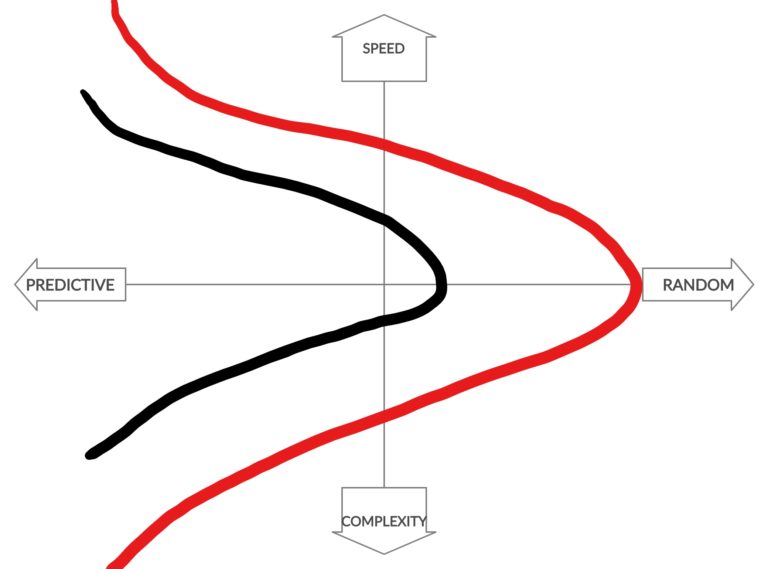
Using my Hand-Eye Continuum as a general guide, everyone’s current hand-eye coordination capacity would look like a tipped over bell curve (shown in black). The goal in including hand-eye drills into a training program is to expand that curve to get it to cover as much of the continuum as possible (shown in red). There WILL ALWAYS be a task that is TOO RANDOM, TOO COMPLEX, OR TOO FAST for any person to execute but training can help expand what and where that limitation will be. When selecting or designing training drills for any individual, visualize their unique profile on the continuum and skirt the edge to drive effective, continuous improvement.
I hope this has been an informative pair of articles whether you are a sport coach, strength coach, trainer, or parent. Please reach out if you have any more questions about hand-eye training. Here are 5 important takeaways from my hand-eye coordination series:
- HAND-EYE TRAINING NEEDS TO BE PROGRESSIVE AND IMPROVEMENT RELIES UPON ADEQUATELY CHALLENGING RANDOMNESS, SPEED, OR COMPLEXITY
- TRAINING IMPLIES CONSISTENCY, NOT DOING RANDOM DRILLS OFF OF THE INTERNET
- CARE MUST BE TAKEN WHEN PROGRAMMING HAND-EYE DRILLS TO DRIVE THE INTENDED ADAPTATION. USE THE HAND-EYE CONTINUUM TO VISUALIZE WHAT NEEDS THE MOST WORK
- MOST PEOPLE CAN IMPROVE THEIR HAND-EYE COORDINATION BUT PROBABLY HAVE MORE PRESSING TRAINING NEEDS IF ATHLETIC PERFORMANCE IS THE GOAL
- IMPROVEMENTS IN HAND-EYE COORDINATION DO NOT AUTOMATICALLY INCREASE SPORTS PERFORMANCE BUT IMPROVING THE QUALITIES NEEDED FOR SPORT CAN HELP
I will do my best to share some more of my hand-eye drills and fillers when in-person training is back to normal. In the meantime, my friend Mitch who I consulted with about this series has been putting out drill videos for goalies and is at the forefront of REACTIVE AND COGNITIVE hand-eye training. He’s great with adding regressions/progressions in the captions and allows viewers to analyze and critically think about what the drill was designed to accomplish. Mitch runs private artificial-ice goalie training and is also an NCAA DIII goalie coach. Follow him @goaliedrmentor on Instagram for some ideas to train your athlete’s hand-eye coordination.
Get strong, stay strong.
Coach Dex
